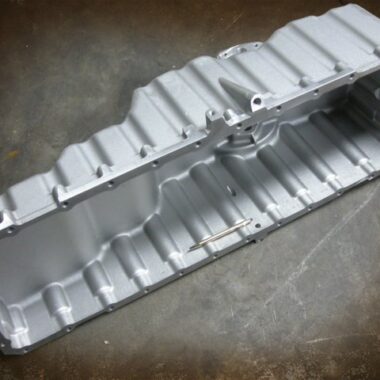Discovering the Craft: All About Aluminum Casting Techniques
Discovering the Craft: All About Aluminum Casting Techniques
Blog Article
Crafting Excellence: Exactly How to Attain High-Quality Aluminum Castings Each Time
In the world of aluminum spreading, the search of perfection is a continuous trip that needs a careful method and an eager understanding of the details entailed. Achieving constant top notch aluminum castings requires a comprehensive grasp of the processes, from choosing the proper alloy to implementing precise mold layouts and carefully managing casting criteria.
Comprehending Light Weight Aluminum Casting Processes
Aluminum casting procedures, important in the production market, entail the elaborate transformation of molten aluminum right into strong forms through a series of thoroughly regulated actions. Understanding these processes is paramount to attaining top notch aluminum castings consistently - about aluminum casting. The key techniques made use of in light weight aluminum casting are die casting, sand spreading, and financial investment spreading

Each of these procedures has its advantages and is picked based upon factors like complexity, quantity, and desired coating of the aluminum casting. about aluminum casting. Understanding the complexities of these techniques is essential for manufacturers aiming to generate premium aluminum castings constantly
Picking the Right Aluminum Alloy
Picking the suitable aluminum alloy is a vital decision in the manufacturing of top quality light weight aluminum spreadings. When choosing a light weight aluminum alloy for spreading, it is important to consider the specific needs of the application to guarantee ideal performance.
One of the most typically used aluminum alloys for spreading is A356 - about aluminum casting. For applications requiring high strength, 7075 aluminum alloy is a preferred selection due to its outstanding strength-to-weight proportion.
Along with mechanical homes, factors to consider such as cost, availability, and post-casting procedures ought to likewise influence the selection of the right light weight aluminum alloy. By very carefully evaluating these variables, makers can ensure the production of high-grade light weight aluminum spreadings that fulfill the desired requirements.
Executing Proper Mold Layout
Developing an efficient mold layout is important for ensuring the effective production of premium aluminum castings. Appropriate mold design plays a considerable role in attaining the preferred characteristics of the last product. To apply a successful mold style, aspects such as product flow, cooling down rates, and part geometry must be carefully considered.
One key aspect of mold and mildew design is ensuring appropriate filling and solidification of the light weight aluminum within the mold dental caries. This entails designing runner and gating systems that promote smooth metal circulation and avoid defects such as air entrapment or insufficient filling. Furthermore, incorporating cooling networks into the mold and mildew design aids control solidification prices and reduce the danger of porosity or shrinkage flaws.

Controlling Casting Parameters

Guaranteeing Post-Casting Quality Checks
To keep the top quality of aluminum spreadings, extensive post-casting quality checks are crucial. After the casting procedure is completed, it is vital to guarantee that the last items meet the preferred requirements and requirements. Among the primary high quality checks entails examining the surface area finish of this the castings to recognize any flaws such as porosity, splits, or surface irregularities. This aesthetic inspection is commonly supplemented by non-destructive screening methods like ultrasonic testing or color penetrant inspection to discover inner flaws that may jeopardize the honesty of the spreading.
Dimensional accuracy is one more important facet that must be verified during post-casting quality checks. Measurements of essential dimensions and tolerances ought to be taken to confirm that the castings conform to the required specifications. Additionally, mechanical residential properties such as solidity, tensile stamina, and effect resistance may need to be assessed through material screening to make certain that the spreadings have the required strength and resilience for their intended application.
Conclusion
In verdict, accomplishing premium aluminum castings calls for a detailed understanding of the spreading processes, selecting the appropriate alloy, making mold and mildews efficiently, controlling spreading specifications carefully, and conducting post-casting high quality checks carefully. By complying with these steps, suppliers can constantly produce light weight aluminum castings that meet the highest possible requirements of top quality and efficiency.
Achieving regular premium aluminum spreadings demands a thorough grasp of the procedures, from choosing the ideal alloy to carrying out precise mold and mildew styles and meticulously controlling spreading parameters. The main methods utilized in aluminum casting are pass away casting, sand spreading, and financial investment casting.
Financial investment casting, likewise recognized as precision spreading, entails creating wax patterns that are covered in ceramic to create molds.Choosing the appropriate aluminum alloy is a critical decision in the manufacturing of high-quality aluminum castings.Making sure specific control over casting specifications is essential for preserving uniformity and top quality in light weight aluminum casting production.
Report this page